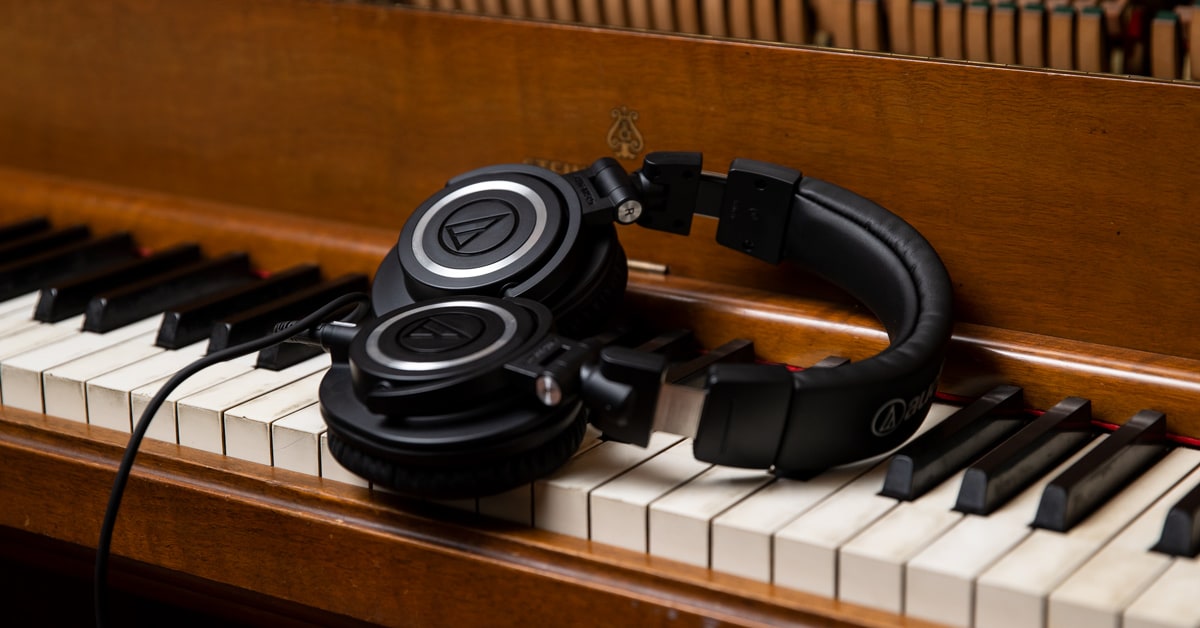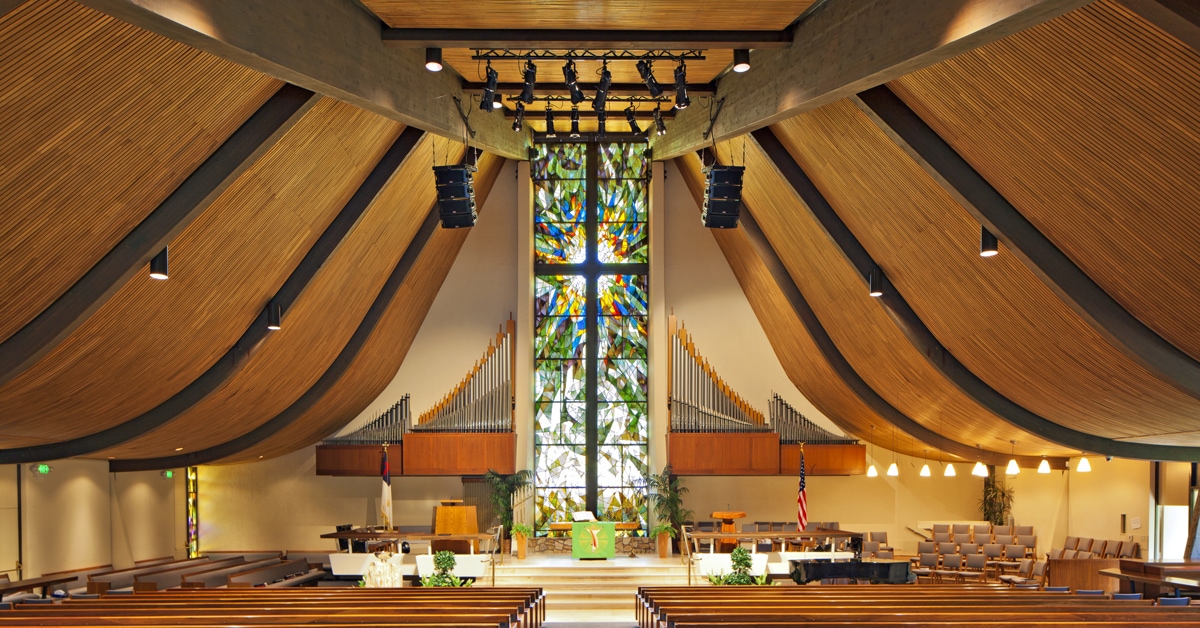Professional lighting in houses of worship elevates services and creates powerful experiences. Many modern houses of worship have started integrating professional lighting and sound into their spaces. A professional lighting system not only provides excellent illumination so the congregation can see, but it can also be used for bands, choirs and other performances to create unforgettable moments.
This blog will provide an overview of the best lighting techniques and equipment to be used in houses of worship. Contact the experts at Guitar Center Professional for a free consultation to help you choose the perfect lighting system to take your worship service to the next level.
Basic Lighting Techniques
It’s important to understand basic lighting techniques, which will help you create powerful looks and scenes. Most lighting rigs have lights hung in different positions in order to angle them at the stage in various ways. These lighting positions include front, side, back and down light. In addition, backgrounds and effects can be utilized in your lighting rig for more interesting looks.
Front
Front light is used to provide illumination and visibility on stage. Lights are hung in front of the stage, usually on trusses or beams over the audience at a 30-45 degree angle, and pointed on stage.
Side
Side light is used to help shape objects or people on stage. Side lights are placed in the wings or sides of the stage and are commonly used for dance performances as they shape the body.
Back
Back light is used to create depth on stage and creates a halo or silhouette of the subject. Back light occurs when the light hits the subject from behind.
Down
Down light, which can also be called top light, is often used to create a wash of light on stage, but can also refer to focused specials. Top light is hung directly overhead on trusses or beams.
Background
Background lighting is when light is applied to a background, which creates different moods or scenes. Examples of backgrounds are cycloramas, scrims, projector screens, scenery or banners. Backgrounds may have textures that can be accentuated or minimized by light and used to create a backdrop for the stage.
Effects
There are many effects that can be used in lighting to create a captivating show. Effects such as pan/tilt, dimmer effects, color effects and animation help create a more interesting show. In addition, many lighting fixtures use gobos to create patterns and textures on stage. Likewise, atmospheric haze is frequently used because it allows the beam of light to become visible, which creates more depth on stage.
Types of Worship and Church Stage Lighting
There are various types of lights that work best in a house of worship, including fresnels, profiles, PARs, moving heads, special effect fixtures and architectural lights. Contact the experts at Guitar Center Professional for assistance with choosing the right fixtures for your space.
Fresnels
Fresnels are softer-edged circles of light that can zoom in and out by adjusting the lamp within the reflector. They range in size from a 3” diameter lens to an 8” diameter lens and can be lamp powered or LED powered. In houses of worship, they are frequently used for an even wash of front light from overhead pipes. CHAUVET Professional has a series of LED fresnels that come in various colors, including Warm White, Variable White and RGBAL.
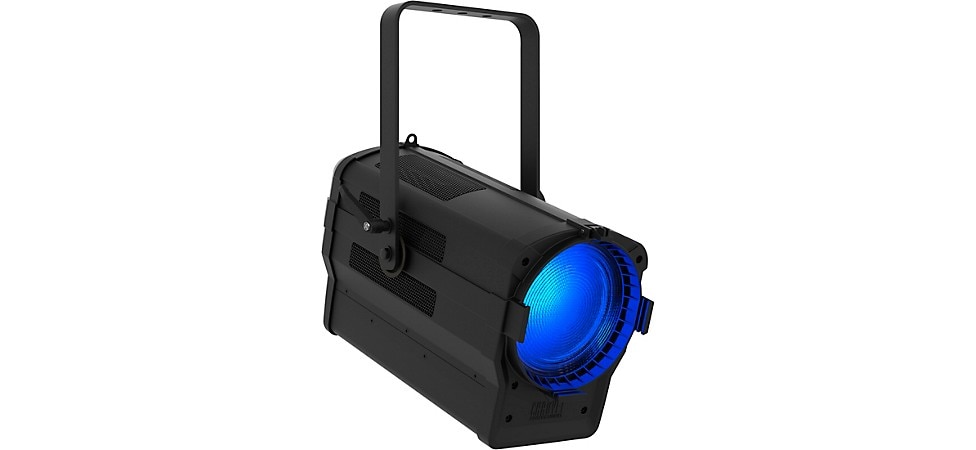
Pictured: CHAUVET Professional Ovation F-915FC RGBAL LED Fresnel Wash Light
Profiles
A profile refers to a hard-edge beam of light. Profiles are used for lighting specials and are great for creating a focal point on stage. Most profiles include framing shutters to control where the light goes, making them ideal for front lights or specials. American DJ, CHAUVET Professional and Elation all have various types of profiles, from moving heads, like the CHAUVET Professional Maverick MK2 Profile, to static fixtures like the American DJ Encore Profile 1000 WW.
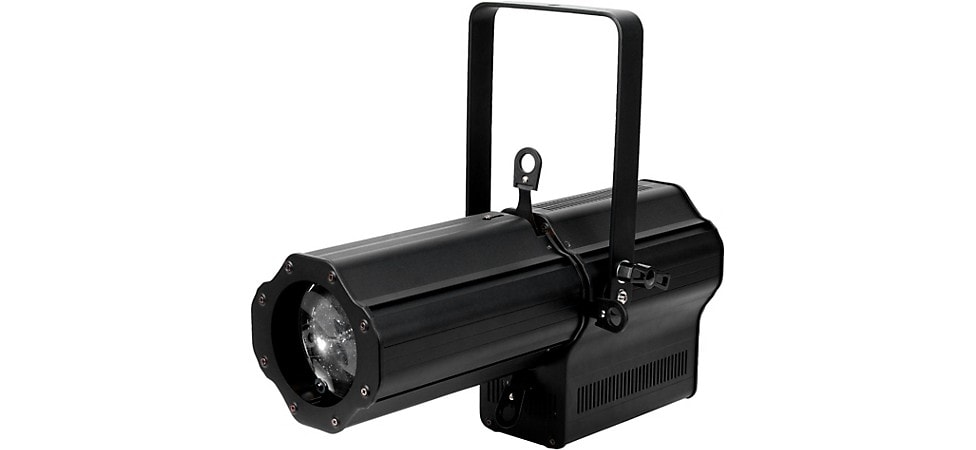
Pictured: American DJ Encore Profile 1000 WW
PARs
PARs, or PAR Cans as they are sometimes called, illuminate large areas and provide overall lighting coverage. PARs help fill the space and are used frequently for general illumination. There are many different types of PARs available, from lamp-powered PARs to LED PARs, like the Elation SIXPAR 200 12W.
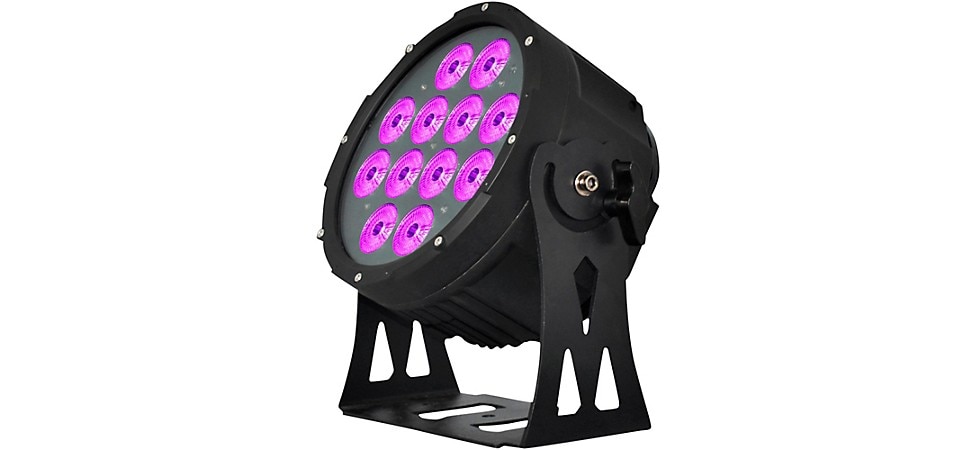
Pictured: Elation SIXPAR 200 12W 6-in-1 RGBAW+UV LED Par Light
Moving Heads
Moving heads are intelligent lighting fixtures that require power and data to operate. These lights have the ability to adjust pan and tilt, which allows more flexibility on stage and the ability to create moving effects. Moving heads can be profiles, washes or hybrids, depending on the fixture. Most moving heads, like the CHAUVET Professional Rogue R3 Spot, come with built-in effects like dimmer effects, pan/tilt effects, color effects and gobos.
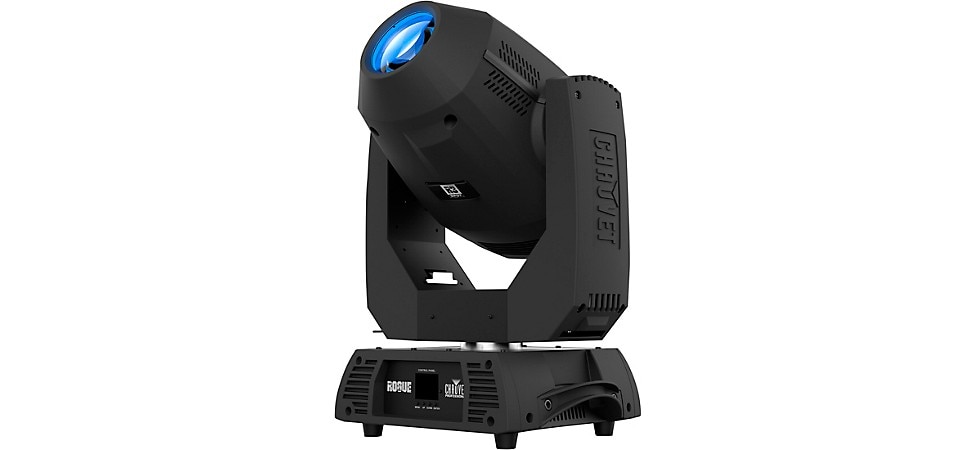
Pictured: CHAUVET Professional Rogue R3 Spot Moving-Head LED Spotlight
Special Effects
In addition to standard lighting fixtures, there are special effect fixtures used for stage lighting. This can include lasers, pyrotechnics or atmospheric effects such as haze, fog or bubbles. Special effects add depth and texture to any design. American DJ has various special effect fixtures, like the VF1300 1300W Fog Machine or Bubbletron Portable High Output Bubble Machine.

Pictured: American DJ VF1300 1300W Fog Machine
Architectural
Architectural lighting is used to transform buildings both outside and inside. It’s frequently used to highlight unique features of a building, adding texture and depth to a design. LED PARs, like the Elation Arena Par Zoom, are perfect for providing a general wash on buildings, while profiles, such as the American DJ Encore Profile Pro, can be focused on parts of the building to bring out various textures.
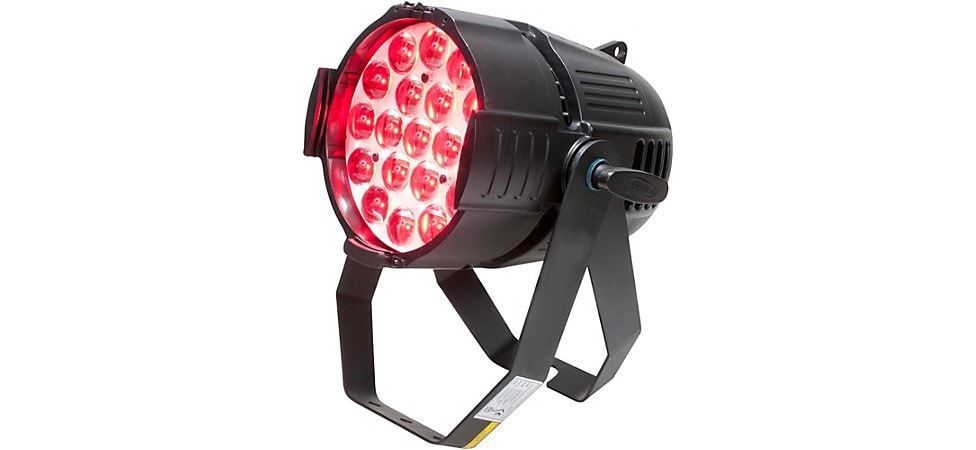
Pictured: Elation Arena Par Zoom
Areas That May Require Lighting
Understanding your space is extremely important when creating a lighting system for your house of worship. Lighting requirements for different areas depend on the design and function of the space. Spaces like the preaching area, floor area, performance positions, band area or choir area will likely use a variety of lighting fixtures. Likewise, if you’re utilizing a set design, it’s important that it’s illuminated for all to see. Guitar Center Professional’s dedicated team of lighting experts can recommend the best lights for these areas to light them all properly.
Preaching Area
It’s incredibly important that the preaching area is well lit, as it’s a key position on stage. The preaching area should be lit with front and down light to provide full illumination. Various wash lights, such as PARs or fresnels, can be used in this setting. Additionally, the preacher, pastor or worship team can be lit with profiles or moving heads, which will highlight them on stage.
Performance Position
The performance area is usually where the worship leader works, which may be the same as the preaching area in some instances. This area can be lit similarly to the preaching area with front and down light to fully illuminate the speaker. PARs, fresnels and profiles work best for this position.
Band
The band usually sits upstage behind the worship leaders or preaching area. It’s helpful to use down light in this area so all of the band members can see their sheet music on stage. In addition, you can use front light, back light or side light to add depth to the lighting look. Fresnels, PARs, spots and moving heads would all work to light the band.
Choir
The choir is often elevated on a platform or risers placed on stage behind the worship leaders or preaching area. It’s important that the audience can see the choir’s faces, so front light is essential here. Additionally, down light and side light can be used to create a wash on the choir and create some depth on stage.
Set Design
The set design on and around the stage helps to present a mood, theme or message to the congregation. Architecture like organ pipes or pillars can be lit to create different textures. In more contemporary stage settings, curtains and other set pieces are typically lit from various angles using fresnels, PARs or profiles in order to set a mood or scene for the service.
Floor Area/House Lighting
The floor area—or house lighting, as it’s referred to in the theater—is important, as it allows the congregation to interact with what’s happening on stage. The floor area should be well illuminated with a wash, so PARs and fresnels are best.
Additional Considerations
DMX Controllers
DMX-512, or simply DMX, is the industry standard to communicate data from a DMX controller to the lighting fixtures. There are various DMX controllers, including software-based controllers and hardware-based controllers.
Software-based lighting controllers are computer programs that are used to control lighting fixtures. Software controllers need a USB interface to connect to DMX, or they can connect to Art-Net or sACN via CAT5 Ethernet cables. Software controllers are great for pre-programming shows, but are not ideal for live shows due to their small screen size.
Hardware-based controllers, which are often referred to as lighting consoles, have physical knobs and faders, which make them best for programming and playing back shows. They run on an internal operating system that’s streamlined for programming. Additionally, most hardware-based controllers have built-in touchscreens, DMX outputs and CAT5 Ethernet outputs for Art-Net and sACN support.
Lighting Software
There are many types of lighting software available for stage lighting. Most DMX controllers are bundled with software from the controller’s manufacturer, as well as free desktop versions, including Obsidian and MA. For advanced users, there are additional software programs available to help with pre-programming shows.
LED vs. Lamps
In order to properly light any space, it’s important to understand how the source of light inside your fixture works. Lighting fixtures will use either LEDs or lamps to generate light.
Lamps are used in both conventional and intelligent lighting fixtures. Conventional fixtures are fixtures that only require power (not data), such as fresnels and PARs. They commonly use standard incandescent lamps. On the other hand, many intelligent fixtures use a discharge lamp. Discharge lamps use high voltage to ignite the gases inside, which energizes them to create an arc. The result is an extremely bright output of light.
An LED is a semiconductor light source that emits light when current flows through it. LEDs are seen frequently today because of their low cost, low power consumption, low heat and lightweight design. Unlike lamps, LEDs do not burn out and don’t need to be replaced. Additionally, LEDs can color mix, whereas lamps need another component like a gel to change color.
Power Distribution
It’s important to consider power distribution when building a lighting plot for your house of worship. It’s best to calculate the amount of power needed by adding up the power consumption of your fixtures. You should always refer to the fixture manual for power information before plugging anything in.
Additionally, if you’re using conventional lighting fixtures, you’ll need a dimmer rack to be able to adjust the intensity of your lights. However, if you’re using intelligent fixtures, which require power and data/DMX, there’s no need for a dimmer rack. All attributes of intelligent fixtures can be manipulated with the DMX controller.
Usually, you’ll need more power than the standard power outlet will supply. Most stage spaces will have power tie-ins that take three-phase power and convert it into a single-phase through a power distribution box. It’s standard to use socapex cables, a 19-pin electrical connector, to distribute your power from the distribution box to the rest of the stage.
Rigging and Access
In order to set up your lighting system, you will need to rig or hang your lighting fixtures to a truss or pipe. Safety is extremely important when hanging anything from a building’s structure, as there’s a risk of something falling and causing an injury. Your building should be inspected by a qualified engineer to ensure rigging is safe. A qualified rigger should hang all of your pipes and truss to ensure they’re properly secure.
Once your truss and pipes are hung in the air, you can use a ladder or lift (if you have proper lift certification) to access your lights for focusing, adjustments or maintenance. Some venues may have a catwalk to access lights in the air. It’s important to always wear proper safety gear like a harness if applicable, whenever you are working at certain heights.
Lighting for Broadcast
Many houses of worship will broadcast their services and host them online. When lighting for broadcast, it’s essential to check how everything looks on camera as opposed to your eyes. It’s important for the camera operators to white balance their shots so all the colors come through correctly on the broadcast. Likewise, it can be helpful to light a background to provide depth to the stage which will keep your broadcast from looking flat.
Suggested Products
The experts at Guitar Center Professional can help you find the perfect lighting fixtures for your house of worship, including fixtures from leading-industry brands such as CHAUVET Professional, American DJ and Elation.
CHAUVET Professional
CHAUVET Professional has top-rated lighting fixtures for all of your lighting needs, from fresnels, PARs, profiles and moving heads to atmosphere effects like haze. Popular fixtures include the CHAUVET Professional Rogue R2X Wash, which is a moving head LED PAR. Likewise, CHAUVET Professional has static LED fresnel fixtures, like the Ovation F-415VW Variable White LED Fresnel, which is perfect for front light or general washes on stage.
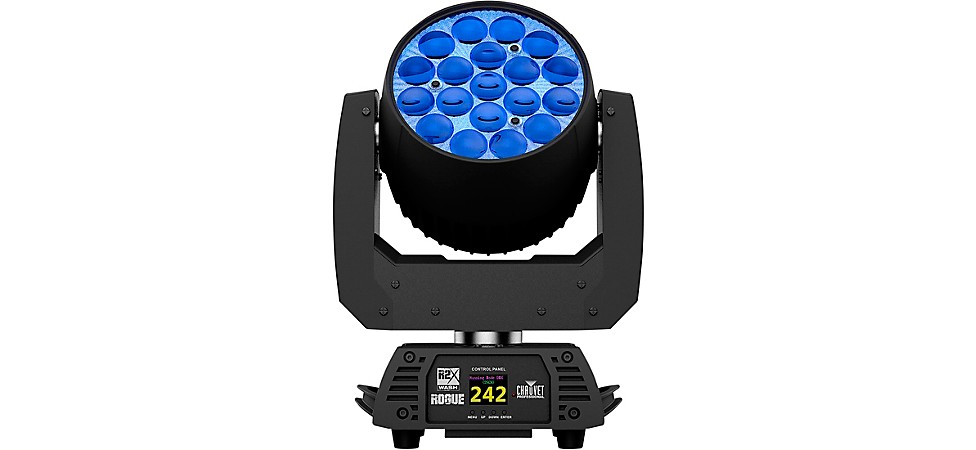
Pictured: CHAUVET Professional Rogue R2X Wash
American DJ
American DJ is another great low-cost lighting brand. American DJ has a full line of lighting products similar to CHAUVET, along with great lighting packages, like the American DJ Dotz T PAR System. Likewise, American DJ has various moving lights, such as the American DJ Pocket Pro Moving Head LED Spot, which works well as a key light for preachers or worship leaders.
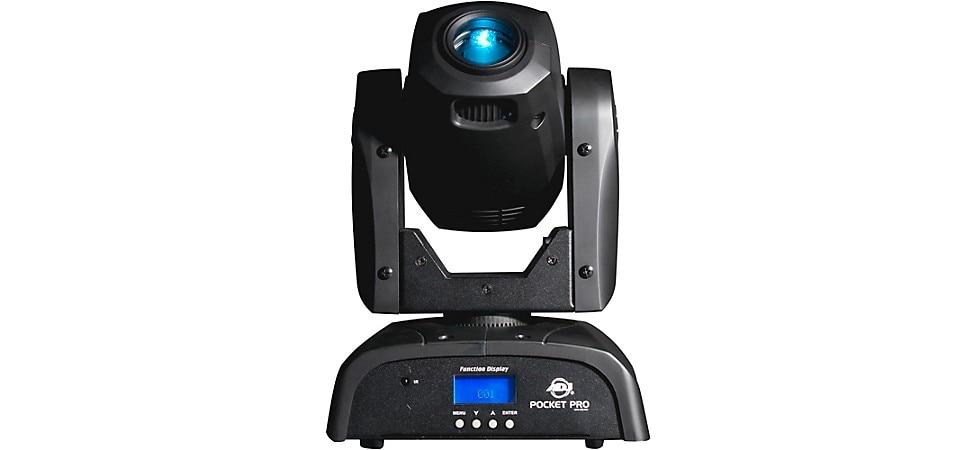
Pictured: American DJ Pocket Pro Moving-Head LED Spotlight
Elation
Elation offers industry-standard lighting fixtures and accessories. Elation produces everything for your lighting needs, from dimmer packs to moving head bars. The Elation CUEPIX Blinder WW2 is ideal for the floor area because it can provide a warm wash on the congregation without being too blinding. Moreover, the Elation WW Profile offers high output and features manual framing shutters, which are ideal for top light specials for the band or for front light.
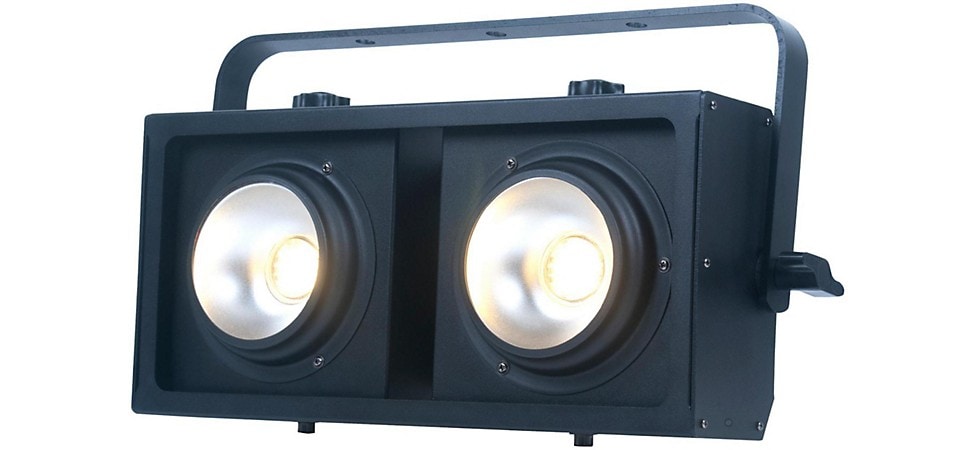
Pictured: Elation CUEPIX Blinder WW2
Summary
Professional lighting systems in houses of worship provide illumination and create memorable experiences for the congregation. Understanding basic lighting techniques and types of fixtures can help you choose the best fixtures for your house of worship. In addition to choosing fixtures, there are many other factors that must be considered in the design process, like your DMX controller, power distribution and rigging. The lighting experts at Guitar Center Professional will work with you to find the best lighting system to meet all of your needs.








